How Play Makes Therapy Better
This post may contain affiliate links.
Let’s compare two therapy sessions. Billy has hemiplegia and needs to work on using his left hand, as well as using both hands together. The therapist gets out some pom poms and has Billy pick them up from one side of the table that he is sitting at, and has him put them into a container that is on the other side of the table. Billy also gets some pop beads and takes them apart and puts them together.
Emma also has hemiplegia and needs to work on using her left hand as well as using her hands together. When she comes in to therapy, her therapist has an activity set up for her to do. Ema has to balance on her hands and knees on a rocking board that is the “boat”, and she has to catch fish in the “water” around the boat with a magnetic fishing pole, while holding herself up with her involved left arm. She then has to use both hands to pull the fish off of the fishing pole, and use her left hand to put the fish in the bucket , which is on her right side.
From these two scenarios, which child do you think had more fun, is eager to do more therapy, and is a more engaged participant? If you answered Emma, then you are right. Both kids worked on the same skills, but Emma’s therapist made it into a game, and got the whole body involved. There are situations where the first scenario with Billy is the most appropriate, but it is great when you can make the activity as fun and as engaging as possible.
There are times where, as a therapist, you have a plan for your session, and you have a game or activity that you want to do, and the child has a different plan in mind. This isn’t necessarily a problem. A fun and beneficial therapy session is often a combination of the therapist’s plan and what the child is interested in and wants to do (the child’s plan).
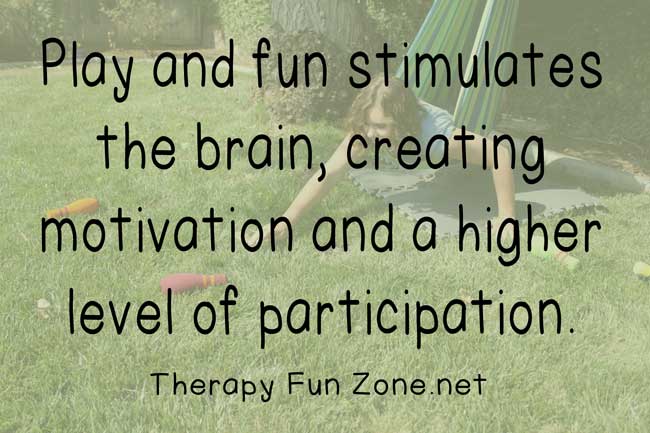
Structured Play
Play and fun stimulates the brain, creating motivation and a higher level of participation.
The therapy setting is generally a structured play setting since we have a plan for what we want the child to do, and how we want them to do it (ie. use your left hand). This structured play type of setting is great for skill achievement, but it is important to make sure that it stays fun and has creativity infused into it, or the motivation to participate won’t be as high.
Unstructured Play
Another type of play is unstructured play. This type of play is children playing alone or together without adult interference. No adults telling them what to do or how to do it. Unstructured play is where creativity blooms. It is when the kids create a kitchen and “delicious” pies made of mud. Unstructured play is important as it give kids a chance to build their self control, social interactions, self sufficiency, creativity, experiment without pressure, and learn to adapt to changes in the activity. Unstructured play can happen almost anywhere, but the benefits are magnified when there is unstructured time outside with friends, which includes all of the sensory experiences and the multitude of creative opportunity that is available outside.
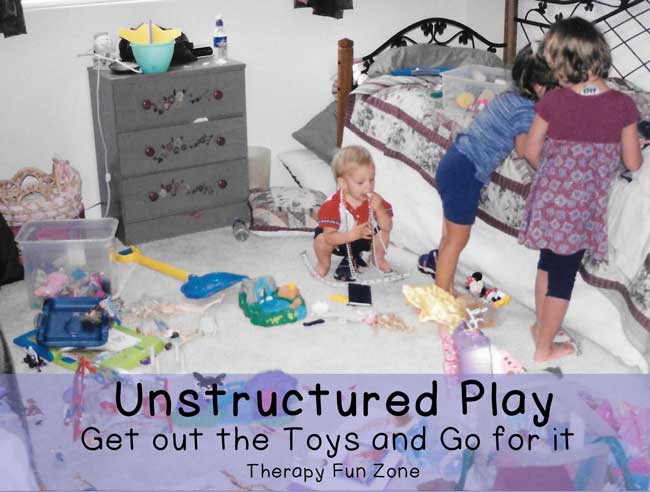
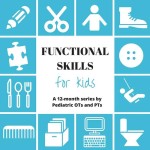
This post is part of the Functional Skills for Kids series. You can read all of the functions on childhood HERE. Read all of my monthly posts in this series HERE.
Looking for more information about Play in childhood? Stop by to see what the other Occupational Therapists and Physical Therapists in the Focus on Function series have written.
The Developmental Progression of Play Skills | Mama OT
Building Fine Motor Skills Through Play | Sugar Aunts
Gross Motor Skills and the Development of Play in Children | Your Therapy Source
Playing with Friends: Supporting Social Skills in Play | Kids Play Space
Using Play to Increase Attention | Miss Jaime OT
Help! My Child Won’t Play – Adapting Play for Individual Kids | Growing Hands-On Kids
How Play Makes Therapy Better | Therapy Fun Zone
How the Environment Shapes the Way Kids Play | The Inspired Treehouse
Why is my child “just playing” when they see an OT? | Your Kids OT


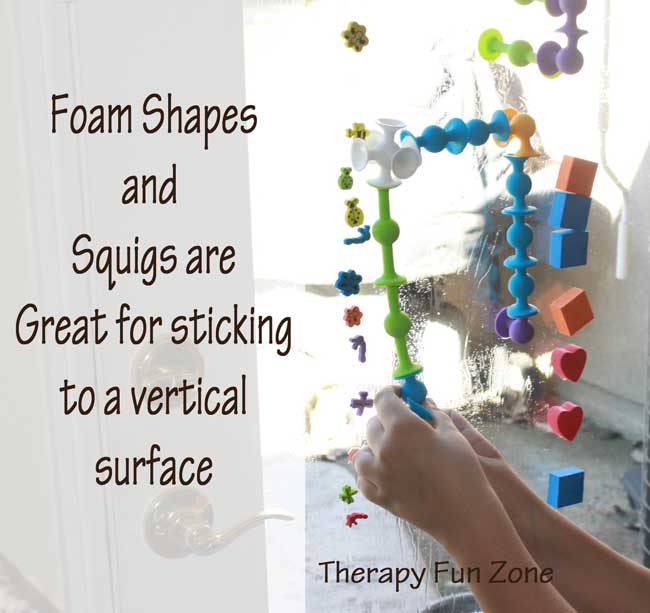
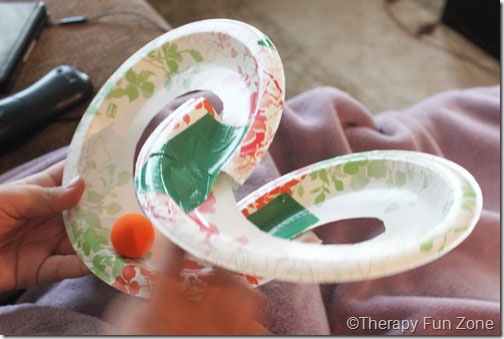
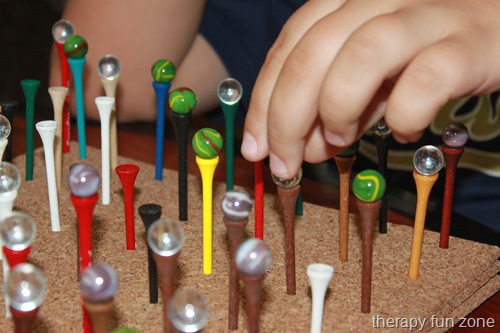

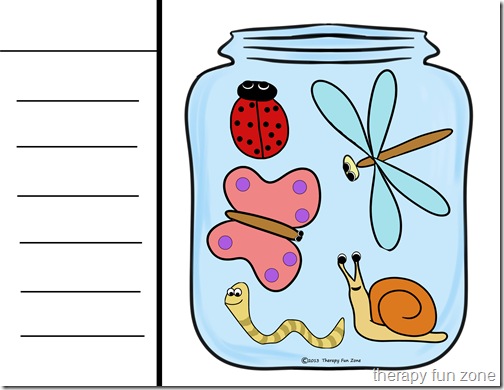
Nice explanation of what therapists try to accomplish using play skills during a session. This is definitely a skill that is learned on the job as a therapist or a parent in my opinion although I wish there was a class in OT/PT graduate school on how to incorporate play in therapy sessions. So important!!!!
How lucky are kids and us therapists to use play in session and to learn (outside of therapy)?! Play really is powerful… and FUN!!